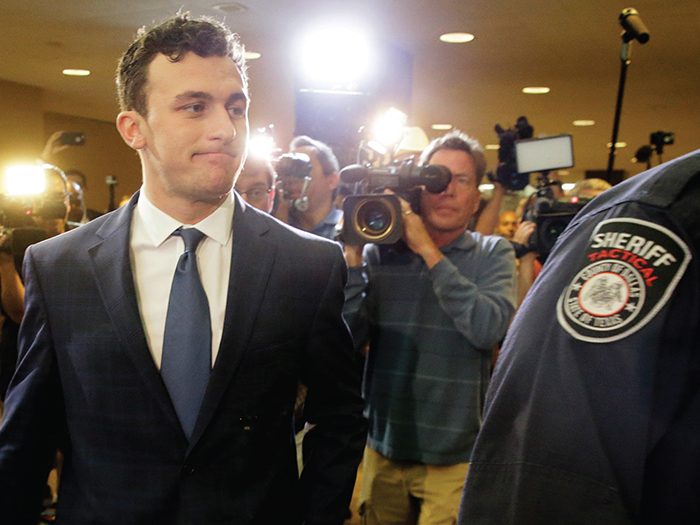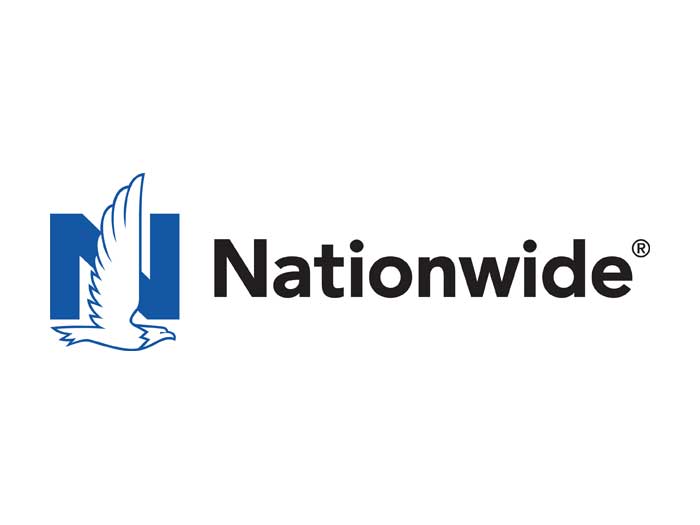Reputational Risk
Star-Studded Risk

As the value of a celebrity or sports star’s contract with a major sponsor has increased in recent years, so it seems has the risk of them disgracing themselves in public.
The benefits of having an A-list celebrity promote your brand can be enormous — boosting customer sales and raising your company’s profile. Many celebrities rake in multimillion dollar sums for being the face of top brands such as Nike or Coca-Cola.
However, such sponsorships are not without risk, particularly if a brand ambassador commits a disgraceful or criminal act. The consequences can be far-reaching. One small slip-up can turn into a PR disaster, ruining an entire advertising campaign and resulting in huge financial losses for the brand.
Rising NFL star Johnny Manziel, whose sponsors included Nike and McDonald’s, was dismissed halfway through his $8.2 million contract by the Cleveland Browns after breaking the NFL’s substance abuse policy, along with having the shadow of domestic violence charges hanging over him.
Earlier this year, tennis star Maria Sharapova was suspended for two years from the sport by the International Tennis Federation for taking a banned substance. Since testing positive, she has been dropped by most of her major sponsors.
Just weeks ago, Olympic swimming medalist Ryan Lochte was caught in a lie after trying to cover up bad behavior during the Olympic Games in Rio. Lochte lost four major sponsorships, including Speedo USA and Ralph Lauren.
Incidents like these are motivating more companies to seek out death, disability and disgrace insurance to protect themselves against such losses. The market, driven by Lloyd’s of London, has grown to $1 billion, according to industry estimates. Payouts are believed to range into the millions of dollars, sources said.
“There’s obviously massive benefit to using a celebrity to promote your product,” said Alan Norris, head of contingency at Talbot Underwriting. “But there’s also a huge potential downside that comes with it.”
In addition to advertisers and sponsors, financial institutions that provide loans and mortgages to sports stars are buying the coverage to mitigate losses when a player’s contract is terminated for criminal or distasteful behavior.
Public Expectations Tied to Value
The number of high-profile cases where a celebrity has become involved in a scandal or commits a disgraceful act has prompted worry among many advertisers and sponsors.
“Certainly more high-profile scenarios have grabbed the headlines in recent times,” said Mark Symons, contingency underwriter at Beazley, who has seen a 50 percent increase in business over the last five years.
On top of that, he said, social media and the ever-increasing immediacy of news tend to magnify even the smallest indiscretion, and companies have become acutely aware of that reality.
“Because of the internet, the speed at which a person’s behavior can destroy their reputation is almost instantaneous.” — Nir Kossovsky, CEO, Steel City Re
“Because of the internet, the speed at which a person’s behavior can destroy their reputation is almost instantaneous,” said Nir Kossovsky, CEO of Steel City Re, a provider of D&O reputation solutions.
“The attributes of that person are expected to reflect favorably upon a product or brand, so therefore the loss of value of those attributes will have a negative impact on that product,” he said.
Kossovsky said that an individual’s reputation value was tied to six major behaviors — ethics, innovation, safety, sustainability, security and quality — and their failure to live up to public expectation would put both the sponsor’s and their own value at risk.
“In Sharapova’s case it was ethics — the drug enhancement issue,” he said. “It was the impairment of her value to her sponsor resulting from a failure to meet her public’s expectations in terms of her behavior.”
Lori Shaw, GAMES practice leader at Lockton’s Charlotte office, said that because reputation accounts for 25 percent of a company’s market value, choosing the right brand ambassador is critical.
“Companies need to be aware of what they are getting into when they take on a talent or celebrity to promote their brand, as well as protecting their balance sheet against the exposures that brings,” she said.
One of the biggest problems for insurers is determining what constitutes a disgraceful act and how to price that risk accordingly.
Broadly speaking, a death, disability and disgrace policy is triggered by “an offense against public taste or decency,” ranging from criminal acts to offensive statements.
Both Kossovsky and Symons noted that the loss of value often depended on that one individual’s expected behavior.
Celebrities with an existing reputation for being controversial are less of a risk than those with a squeaky clean image.
“Perversely, that means the most sensitive risk is often the individual with the best reputation because the impact of their actions can be felt far more disproportionately than someone who has a track record,” said Symons.
Quantifying Losses
Death, disability and disgrace insurance can be bought either as a stand-alone product or as part of a broader policy.
In addition to covering the costs associated with having to change or drop a campaign altogether, a standard policy can also be used to protect against a loss in sales linked to the death or disgrace of the individual concerned.

Alan Norris, head of contingency, Talbot Underwriting
Often, however, it’s difficult to quantify the size of a potential loss in revenue or damage to the brand associated with an endorsement when things go wrong.
“With a death, disability and disgrace policy you can only really insure the actual costs associated with that campaign, but what you can’t insure against is the financial damage to the brand because it’s an intangible asset,” said Norris.
Shaw said that even before assessing the impact of a celebrity’s behavior on a company’s market value, you’ve got the upfront costs of scrapping the campaign or starting a new one.
Initial costs can include hiring a replacement spokesperson, removing a celebrity’s image from packaging, reshooting or reproducing new advertising material or reimbursing the money paid to secure the endorsement in the first place.
It can also extend to money spent on TV or radio commercials and advertising space.
Edel Ryan, partner and head of media and entertainment at JLT Specialty Ltd., said that the onus was on the policyholder to prove that the celebrity had committed a disgraceful act according to the contract.
“The underwriter will start by looking at the morals clause within the contract and the celebrity’s past history to determine if the policy should be triggered,” said Lockton’s Shaw.
Some acts, though considered outrageous, might be excluded if they are deemed to be within the bounds of the celebrity’s normal behavior.
All things considered, the benefits of a celebrity sponsorship must be weighed against the potential pitfalls.
“It’s critical to have the right cover in place to protect against the loss of value to their product or service,” said Kossovsky. &










